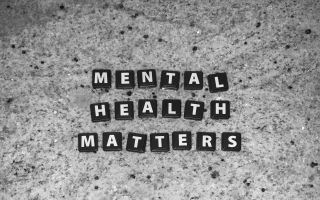
The number of incarcerated individuals in the United States with psychological or psychiatric disorders has been steadily increasing since the mid-1950s, with the upsurge stemming specifically from the deinstitutionalization movement that gained considerable momentum throughout the nation, particularly in the 1960s.
While well-intended, the movement did not produce the desired expectations. In large part because of the deinstitutionalization movement, I argue that our nation’s jails and prisons have effectively become “the new asylums,” the de facto state psychiatric hospitals, responsible for confining and caring for mentally ill offenders (Pittaro, 2015).
As I have publicly addressed on many occasions, prisons and jails were never designed nor intended to serve in this capacity. And despite vast improvements made over the last decade, our correctional system is still ill-equipped to effectively supervise the many men and women whose needs far exceed what corrections can adequately provide.
The closing of most state psychiatric hospitals shifted the focus of mental health care in the United States, which led to a significant influx of mentally ill individuals entering communities that were and, to a significant extent, still are, ill-equipped to handle individuals with such pressing needs. As a result, many became homeless or wound up in prison or jail, a trend that has continued to this day. Today, nearly half the people in U.S. jails and more than a third of those in U.S. prisons have been diagnosed with a mental illness—not to mention the prevalence of co-occurring addiction, which increases the likelihood of criminal justice involvement (Yohanna, 2013).
Many of those deinstitutionalized and released into the community did not improve, despite the new medications that were available to them. Instead, most migrated to underfunded communities that were ill-equipped to manage their unique issues. Eventually, many who were released spiraled into despair and homelessness; a large number subsequently became entangled within the criminal justice system, mostly for public nuisance/disorder offenses. As they say, the rest is history.

To further illustrate this point, three of the nation’s largest jails (Rikers, LA County, and Cook County) are providing largely uncontrolled psychiatric care for individuals who would be better served in psychiatric facilities (Nishar, 2020). To compound matters, the research has consistently shown that being incarcerated in a correctional facility is far more likely to worsen, not lessen, the mental health conditions of those individuals, which suggests that when they are eventually released into society, their psychiatric issues will have likely intensified rather than weakened. Therefore, the likelihood of being reincarcerated shortly after release from confinement is incredibly high.
Inmates with mental illness, whether pretrial or convicted, present numerous challenges to correctional staff and management. For instance, mentally ill inmates may engage in self-harming behavior, such as self-mutilation or the intentional ingestion of nonedible items, that then require medical intervention, or disrupt or frighten other inmates with bizarre and inappropriate behavior and outbursts (Treatment Advocacy Center, 2018). This particular population of inmates may also be prone to aggression, violence, or bizarre, threatening outbursts, particularly if they suffer from delusions or what DeAngelis, (2022) refers to as “command hallucinations,” telling them to hurt others.
Mentally ill inmates are also more likely to be victimized by other inmates, are more likely than inmates without mental illness to be placed in solitary confinement, and are more likely than inmates without mental illness to attempt or die by suicide. Mentally ill inmates also tend to stay incarcerated longer than non-mentally ill inmates, which contributes to jail and prison overcrowding. Reasons for these longer stays include difficulty in understanding and following institutional rules and being held in a correctional institutions while waiting for a psychiatric hospital bed to become available.

A consensus exists among criminal justice practitioners, especially those who work in corrections, that individuals who are severely mentally ill belong in hospitals, not prisons or jails. However, the reality of the situation is that offenders with severe mental illness are currently more likely to occupy a bed inside a correctional institution than one in a psychiatric hospital. Until the nation’s mental health system is realigned to better serve individuals with severe mental illness who break the law, this unfortunate trend will continue.
As a starting point in rectifying the issue, the Treatment Advocacy Center presents the following recommendations:
- Implement and promote jail diversion programs, such as mental health courts, to divert mentally ill persons from incarceration.
- Promote the use of community corrections alternatives with assisted outpatient treatment program (AOT) options to ensure at-risk individuals receive adequate and appropriate treatment while serving their sentences in the community.
- If a correctional sentence is to be served, establish mindful intake screening techniques to assess the offender’s medication history and suicide potential, as well as other risks and needs that might pose a challenge to the management of this special population of criminal offenders.
- Fulfill the moral, ethical, and legal duty to provide quality medical care to individuals in correctional custody, including the provision of appropriate treatment and administration of psychiatric medication for inmates with serious mental illness.
- Mandate release planning, including a written plan for psychiatric follow-up. Research has found that mentally ill inmates who receive follow-up treatment after release are significantly less likely to commit another violent crime compared to those who did not receive follow-up treatment, yet most offenders with mental illness do not receive such treatment upon reentry.
While not an exhaustive list, it can be used as a starting point in generating further discussion, but more importantly, shed light on a societal problem that will only continue to worsen.
This post was originally published on this site be sure to check out more of their content.








